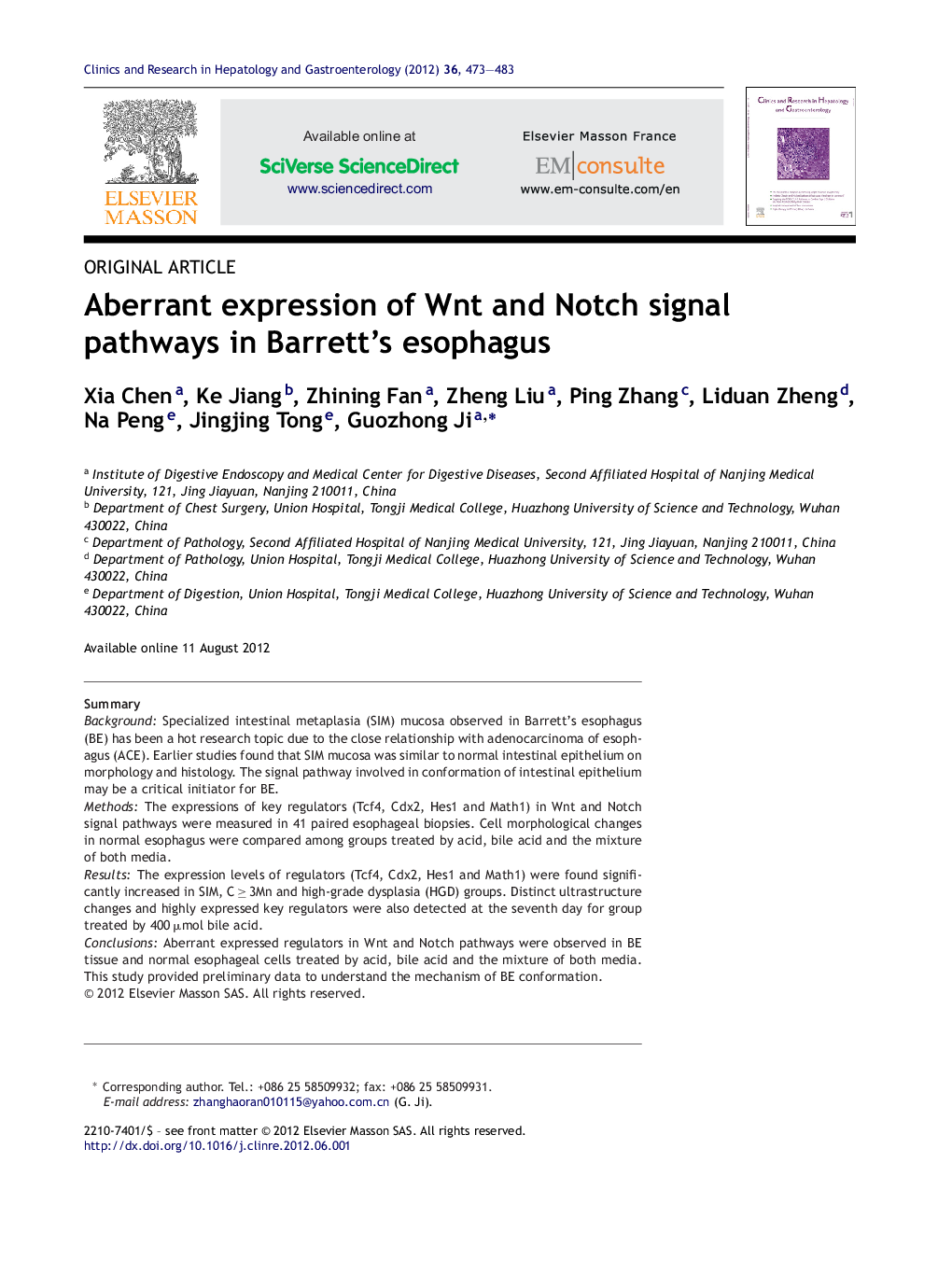| Article ID | Journal | Published Year | Pages | File Type |
|---|---|---|---|---|
| 3286675 | Clinics and Research in Hepatology and Gastroenterology | 2012 | 11 Pages |
SummaryBackgroundSpecialized intestinal metaplasia (SIM) mucosa observed in Barrett's esophagus (BE) has been a hot research topic due to the close relationship with adenocarcinoma of esophagus (ACE). Earlier studies found that SIM mucosa was similar to normal intestinal epithelium on morphology and histology. The signal pathway involved in conformation of intestinal epithelium may be a critical initiator for BE.MethodsThe expressions of key regulators (Tcf4, Cdx2, Hes1 and Math1) in Wnt and Notch signal pathways were measured in 41 paired esophageal biopsies. Cell morphological changes in normal esophagus were compared among groups treated by acid, bile acid and the mixture of both media.ResultsThe expression levels of regulators (Tcf4, Cdx2, Hes1 and Math1) were found significantly increased in SIM, C ≥ 3Mn and high-grade dysplasia (HGD) groups. Distinct ultrastructure changes and highly expressed key regulators were also detected at the seventh day for group treated by 400 μmol bile acid.ConclusionsAberrant expressed regulators in Wnt and Notch pathways were observed in BE tissue and normal esophageal cells treated by acid, bile acid and the mixture of both media. This study provided preliminary data to understand the mechanism of BE conformation.
